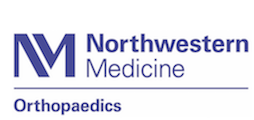|
|

|
« Back
My 83-year-old mother was recently diagnosed with spinal stenosis. She mostly suffers from back pain and sometimes pain down her leg. In order to avoid the pain, she stays bent forward most of the time. Would a brace help her?
|
|
Lumbar spinal stenosis in this age group is usually caused by the natural degeneration of the spine over time. The condition is described as a narrowing of the space available for the spinal cord, nerve roots, and blood vessels in the spine. The lumbar spine (low back area) is the region affected most often by this condition.
Bending forward helps take the pressure off the neural segments (spinal cord, spinal nerve roots) but this compensatory posture has some obvious drawbacks. The use of a corset or brace has been shown to aid patients by decreasing the pain, thus making it possible to stand upright and walk unassisted. However, once the brace is removed, the benefits are gone as well. In other words, wearing a brace is not a long-term answer.
Other types of treatment have been tried and results reported. Acupuncture, electrical stimulation, and traction are just a few examples of treatments investigated. But not everyone responds well and there is insufficient evidence to direct and guide who is most likely to respond to each treatment type.
Surgery is advised for patients with moderate-to-severe symptoms that persist over time. But keep in mind that patients with mild-to-moderate symptoms have a 30 to 50 per cent chance of improvement over time without treatment. Symptomatic relief with short-term bracing is considered acceptable, especially if there is a chance for symptom resolution without surgery.
|
References:
|
|
|
« Back
|
|
|
|
*Disclaimer:*The information contained herein is compiled from a variety of sources. It may not be complete or timely. It does not cover all diseases, physical conditions, ailments or treatments. The information should NOT be used in place of visit with your healthcare provider, nor should you disregard the advice of your health care provider because of any information you read in this topic. |
 | All content provided by eORTHOPOD® is a registered trademark of Mosaic Medical Group, L.L.C.. Content is the sole property of Mosaic Medical Group, LLC and used herein by permission. |
|
